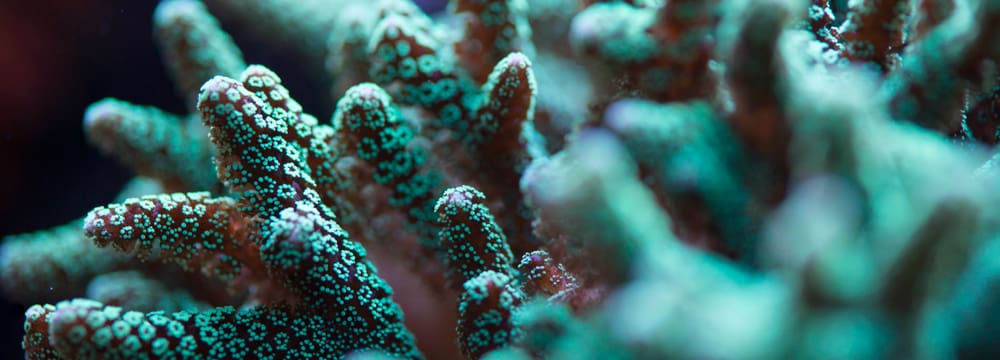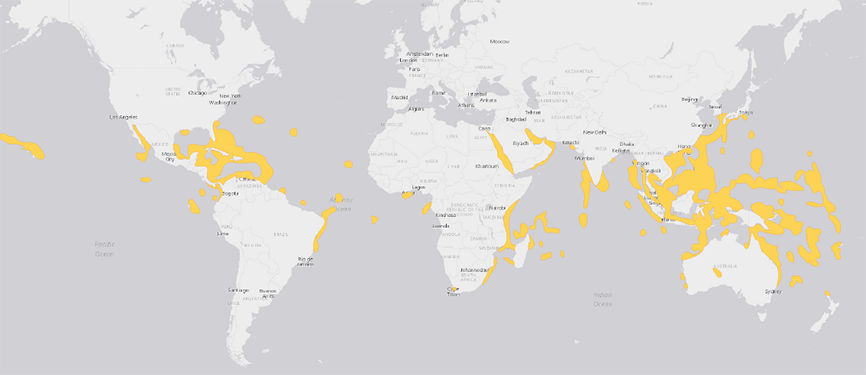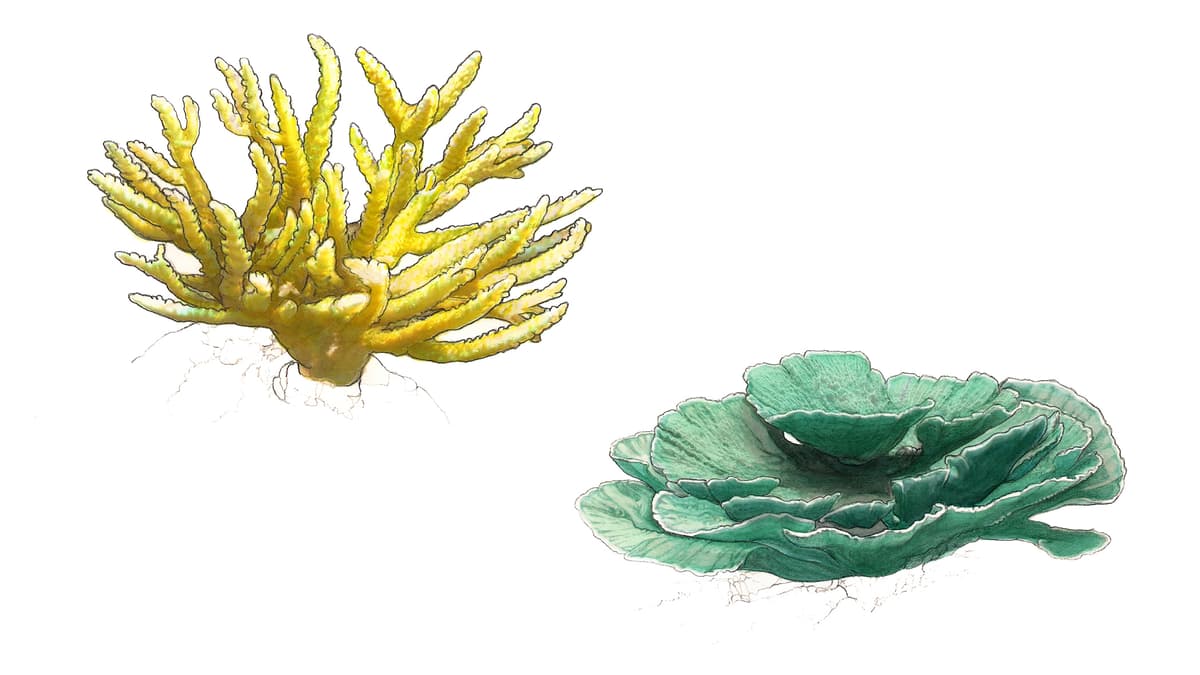
Stony corals
Scleractinia
Stony corals are able to form calcium carbonate at their base. Thus, they are the main contributors to the formation of coral reefs, the most biodiverse habitats in the oceans. These are increasingly threatened by global warming, sewage, fishing, ocean acidification and direct destruction by tourist development of the reefs.
| Related to | Cnidarians, Anthozoa, Stony corals (ca. 1'500 species, probably much more) |
| habitat | Shallow, light-flooded tropical seashores with temperatures between 20° and 20° Celsius, not at river mouths |
| habitat | In colonies of thousands of individual polyps |
| structure | Calcareous skeleton, reef-building |
| feeding | By photosynthesis of algae (symbiosis), microplankton |
| size | Polyp few millimeters, single species up to 35 cm |
| Reproduction | By release of large amounts of eggs and sperm, but also by dividing of polyps, creating several new polyps |
| Use | States like Bahamas, Bermuda, Maldives, Tuvalu and Kiribati have been formed by the growth of stony corals, in aquarium trade and as souvenir (import only with permission CITES authorities!) |
| Aquarium keeping | Very costly |
| Population trend | Decreasing. Threatened by global warming, marine pollution, fishing, ocean acidification and direct destruction by tourist development of the reefs |
Distribution


